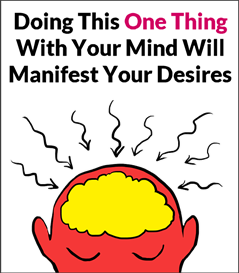 |
Creative Visualization
|
|
|
|
How A Hologram Is Like The Brain
|

The human mind is the only faculty capable of reasoning and reflecting upon itself. It is also the only faculty capable of
reaching out to other dimensions of reality beyond the merely physical.
Although biologists and medical doctors know very little about the human brain and how it works, there is no dearth of theories
about its mechanics. The most exciting of these is the holographic theory of the brain as proposed primarily by neurosurgeon
Karl Pribram of Stanford University.
Do you remember the popular science fiction film Star Wars? Ah, yes! You are probably reminiscing the good old days with Jedi knights Qui-Gon Jinn and Obi Wan Kenobi, as well as the
doomed relationship between Queen Amidala and Darth Vader. Then there are also the attention-grabbing robots C-3PO and R2-D2.
But did you remember that scene where a three-dimensional image of Princess Leia bearing a message was projected from the
head of the robot? That image was a hologram. A holo—what? A hologram!
You may ask what a hologram is and how is it formed. A hologram, from the Greek words holos, “whole”; gram “message”, is a record obtained from three-dimensional images. Holograms are made by sending a laser beam to a photographic
plate in such a way that it is divided into two parts carrying different information to the plate. When the film is developed
and place in front of another laser beam, it produces a hologram, that is, a three-dimensional image of the object that seems
to be hanging in mid-air.
David Loye, in his book The Sphinx and the Rainbow, describes several similarities between holograms and the way the brain functions:
The first similarity lies in the way human beings form images in their minds, which has puzzled psychologists
and neurologists for years. There is this gap between what we see or feel and the emergence of a “disembodied, substanceless
but incredibly powerful thing--an image.” The hologram has somehow duplicated this mysterious process.
The second similarity is in “the way information is spread throughout the hologram as a whole and not in parts.”
One can never have half an image alone. It is always the whole picture. “Here then,” says David Loye, “at last was what Lashley
had found in his search for memory – that the information was not localized but was rather spread throughout the entire brain.
Each brain part, in some hitherto unfathomable way, contains the whole memory,” like a hologram.
The third similarity is this: “If you continue to slice up the hologram, each fragment would continue to contain
the whole image, that is, the intact whole object in smaller and smaller fragments. The only difference would be that the
image would get progressively less clear, more fuzzy.“ This is the same with memory. The more interferences are made in your
memory, the less efficient it becomes.
The fourth similarity is in the hologram’s amazing storage capacity. According to Loye, “By slightly shifting
the angle of the laser beam, it is possible to record many images on a single piece of receiving material. If one uses a small
crystal of lithium niobate, for example, one trillion bits of information can be stored within a single cubic centimeter or
a piece about the size of a sugar cube. This would permit storing the entire Encyclopedia Brittanica in material the size
of a single page.”
Fifth, the hologram, like the brain, can also recognize words and objects by association. The hologram “can
be used to scan a page in which a target word or image lies imbedded. When it detects its 'mate', it lights up in a way highly
suggestive of how our own brains enable us to recognize words, faces, everything we confront“.
The concept of the hologram is the most exciting theory of the brain ever advanced by neuroscience because
it clarifies a great deal about how the brain works in a manner not possible before. As David Loye puts it “Here was a new
device that seemed to demonstrate how images are formed from perception; how they are combined in learning, how they are stored
in memory; how they are recalled so that we may recognize or assign a meaning to everything we encounter in our lives, even
how these images are flung ahead of us to shape the notions of the future that guide us onward, toward goals to be sought
or away from pitfalls to avoid.”
|

